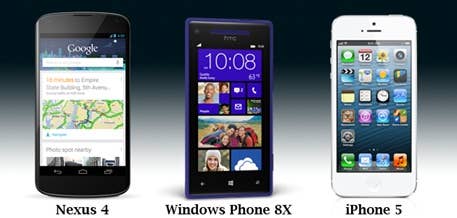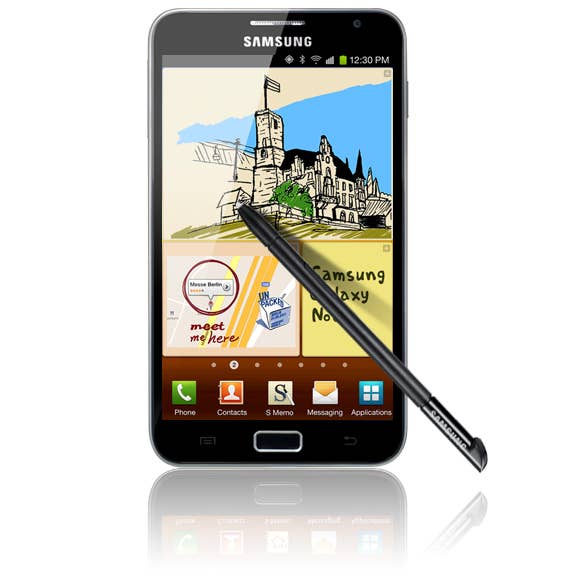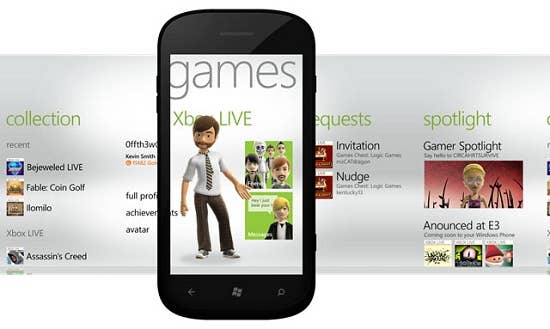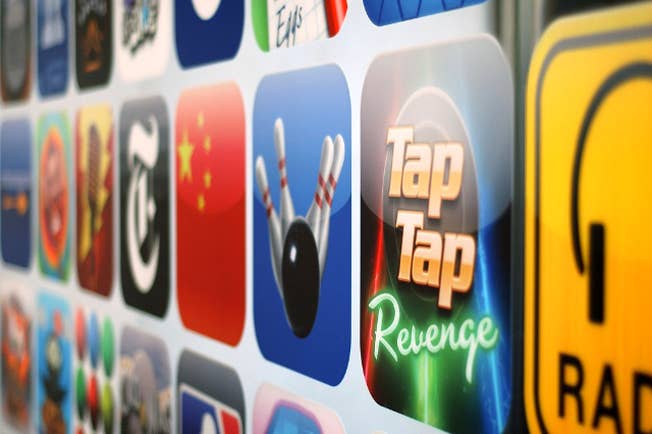The State of Mobile Game Development
Swarm co-founder Matt Haggerty offers a comprehensive look at the challenges and opportunities in mobile gaming today
The mobile game market is exploding. Recent data from Avista Partners shows that the value of the mobile game market in 2012 will likely be around $7.8 billion and is projected to grow to $18.3 billion in 2016. Thanks to relatively low barriers to entry, mobile game developers from indies to veterans have a shot at capturing some of this large pie through education, creativity, hard work, and a bit of luck.
When it comes to mobile game development, the story starts with the devices themselves.
Mobile device technology has been evolving rapidly over the last five years. The industry leader of yesteryear, Research In Motion (RIM), has gone from a hailed industry leader to a lagging market participant while newcomers such as Apple (AAPL) and Google (GOOG) have taken the market by storm. The fierce competition between these giants has created strikingly futuristic devices that, quite literally, put the world in the palm of our hands. New mobile devices have screens with pixel densities superior to most monitors, wireless internet speeds as fast as many broadband connections, and processors with as many cores as desktop PCs.

Flagship devices such as the iPhone 5, Nexus 4, and Windows Phone 8X weigh in at 326 pixels per inch (ppi), 320 pixels per inch (ppi), and 342 pixels per inch (ppi) respectively. According to Speedtest.net, LTE wireless internet connectivity average speeds are roughly 14Mbit/sec down and 5Mbit up (on Verizon). These speeds are comparable to Comcast's Performance cable internet service, which advertises download speeds of up to 20Mbit/sec and uploads up to 4Mbit/sec. Additionally, tablets such as the iPad 4 and Nexus 10 sport powerful quad core CPUs, an unthinkable achievement five years ago.
Is mobile technology stabilizing? It's not an easy question, but perhaps the answer is “somewhat.” Physical device sizes seem to be settling on a few different sweet spots. For a few years now, tablets have been settling in on form factors that measure roughly 10 inches and 7 inches diagonally. Samsung has made a foray into the 5-inch “phablet” form factor with its Galaxy Note, but other tablet manufacturers seem to be a bit hesitant to follow suit.

High end mobile phones (and most Android phones for that matter) have been trending toward larger screens as of late. The Nexus 4 and Galaxy SIII are remarkably close to a 5-inch form factor while Apple chose to stick to a 4-inch screen for the iPhone 5 and HTC opted for a 4.3-inch screen on the Windows Phone 8X. It's likely that consumers can expect to see a majority of smartphones in the 4- to 5-inch range for the foreseeable future. Devices of this size are still small enough to fit in most pockets or purses while still offering ample screen real estate and room for high-capacity batteries.
Even though form factors have standardized, device components inside and out can still be improved. As battery technology improves and engineers find ways to make circuits more efficient, consumers will likely continue to see advancements in CPU and GPU speeds. And wireless carriers will continue to compete for subscribers by expanding their high speed networks in both developed and developing nations.
Despite these extra features and functions that require additional power, we may eventually see mainstream smartphones achieving battery life of a week or more. Keep in mind that battery technology is important to a variety of industries outside of mobile electronics. From automobiles to power to medical, a breakthrough in any one industry may be a boon to all industries.
Devices are only one part of the equation. Without users, devices are lifeless.
"If Microsoft can create synergy between its wildly popular Xbox console and its up-and-coming Windows Phone platform, the firm may have a shot at becoming a mobile gaming powerhouse"
It seems that people from nearly all walks of life are finding ways to engage with mobile devices. There have been some amazing stories about how kids with autism have been able to find joy in using tablets and how smartphone games may help slow the onset of Alzheimer's.
According to Nielsen, “55.5 percent of US mobile phone users own a smartphone as of July [2012], up from 41 percent in the year-earlier period.” The same source states that “the majority of American teens (58 percent) now own smartphones” which represents about a 61 percent increase from 2011, and “74 percent of 25-34 year olds [in the US] now own smartphones.” In terms of handsets obtained within the last three months in the US, Android leads the pack at over 50 percent, the iPhone comes in at 34 percent, and Blackberry trails with 8 percent. Windows Phone picks up the fourth place slot at around 4 percent share.
Given their small market share, Windows Phone and Blackberry aren't very relevant mobile gaming platforms, though some developers have taken the “big fish in a small pond approach.” Since the markets for these two platforms are smaller, achieving visibility for a title can be easier than on Android and iOS. Furthermore, a potential saving grace for Windows Phone may be Microsoft's powerful Xbox brand. If Microsoft can create synergy between its wildly popular Xbox console and its up-and-coming Windows Phone platform, the firm may have a shot at becoming a mobile gaming powerhouse.

Smartphone use and adoption is rapid in the U.S., but many other countries are seeing even more explosive growth. According to mobile analytics company Flurry, year-over-year growth of net active devices (from July 2011 to July 2012) grew by 401 percent in China, 279 percent in Chile, 220 percent in Brazil, and 217 percent in Argentina just to name a few. In China alone, “more than 100 million active new devices entered the market” and “China's active installed base could overtake the United States as early as the 2012 holiday season.”
This increase in smartphone use will continue to broaden the already wide spectrum of users that interact with games and apps. To be successful, developers will have to be continuously mindful of software localization and accessibility. The huge global market will continue to create massive opportunities for software creators that dedicate time to polishing user interfaces, translating text, and generating mass appeal.

In addition to the intangible rewards that come from delivering software to the hands of millions, financial rewards will continue to become more abundant as well. As users become more accustomed and familiar with this relatively new technology, it can be expected that they will also be more comfortable making purchases through the smartphone medium.
Mobile payments already come in a variety of forms from near field technology (NFC), to device attachments such as Square, to more traditional online payments. All of these methodologies have resulted in worldwide mobile transaction values that are projected to reach $171.5 billion by the end of 2012.
This astronomical value of mobile transactions has spurred the growth of numerous mobile gaming businesses.
With such a huge potential market, mobile business models are plentiful. Within the gaming sector alone, businesses have a variety of avenues to choose from. Major business categories include on-device gaming, gaming systems, and contracting. However, these categories can be mixed and matched to meet the goals of a particular organization.
In the on-device gaming category, there are few general methods for monetizing. First, the Free-With-Ads Model works by giving the game away for free and earning revenue for displaying advertisement banners in the game. This model tends to work well for games that have large user bases or screen real estate to spare.
Then, there are the Freemium and Paymium Models which focus on the effective implementation of in-app purchases of digital goods. The in-app purchases can come directly in the form of cash through offerings built into the Android or iOS operating systems, or they can come indirectly through the use of offer-wall services like Tapjoy. Freemium and Paymium Models are good choices for most mobile games. They offer players the opportunity to choose their preferred level of engagement and value exchange.
Direct cash in-app purchases typically reduce purchasing friction as compared to offer-wall services. However, offer-wall services help generate revenue from users with more time (and less money) on their hands. In some cases, it can be a prudent strategy to include both monetization options in a single title.
Finally, the traditional Paid Model generates revenue when users purchase the software. Within the Paid Model, surveys have shown that there tends to be significantly higher revenue earned on iOS than Android by about 10:1.
In addition to each of these models, businesses can opt to include a layer of subscription-based monetization. Sometimes it makes sense to give gamers a way to subscribe to your game in exchange for regular service or even a regular delivery of virtual goods to their accounts. Monetization is about giving players options that enable them to reward developers in exchange for something they value.
Next, there is the relatively new mobile gaming systems market category. There are far fewer players in this market than in on-device gaming, but the barriers to entry are higher. This isn't about creating the next hot new tablet or smartphone, but rather branching out and adding creativity to create a new niche. In this space, two examples of mobile gaming systems include Sphero and Ouya.

Due to the higher barriers of entry, both of these companies took on outside funding to help fund their creations. Sphero is venture-backed while Ouya raised significant capital through its Kickstarter campaign. It's still too early to prognosticate about these two, but they're worth keeping an eye on.
Last but not least, there is a flourishing contracting business model in which development teams create mobile software for others. This arena spans both mobile games and apps. Mobile software development is in high demand, and supply of skilled developers is relatively low by comparison. Simple economics is enough to make the case for this model. Creating games can be a fun place to start for people looking to get started in mobile development.
New developers interested in the nitty-gritty of mobile game development should consider picking up a copy of Beginning Android Games or Beginning iOS Game Development. For the rest of the world, creating mobile games doesn't necessarily require knowing the ins and outs of Java, C++, OpenGL, or SQL. A variety of tools, engines, and platforms are readily available to help; however it's important to choose the best tool for the job. Tools and engines of note include: AndEngine, LibGDX, GameMaker, and Unity.
AndEngine and LibGDX are both free and open source, while Unity and GameMaker will set studios back anywhere from hundreds of dollars to a few thousand. AndEngine is relatively easy to get into, but it is limited to the Android platform, while LibGDX is a bit more complex but it enables cross-platform distribution. GameMaker and Unity are also cross-platform options, but they both are more full featured and require less programming knowledge, and are also less tunable, than either AndEngine or LibGDX. Between GameMaker and Unity, casual developers looking to get their feet wet with 2D titles may want to check out GameMaker, but those interested in both 2D and 3D titles should give Unity a look.
It's also worth mentioning that other tools and engines beyond these do exist (such as Cocos2d-x, Marmalade, and the BatteryTech SDK) and they may be useful depending on the application. If a physics engine is required, then Box2D (written in C++) is a good bet.
The aforementioned tools and engines will help games get off the ground, but by adding a social layer developers can improve reach, retention, and revenue. Social platforms make it simple to add features like global leaderboards, achievements, and player-to-player communication - features pioneered by PC gaming and consoles like the Xbox 360.
Notable mentions include Gree (formerly OpenFeint), Scoreloop, Papaya, and Swarm (aka SwarmConnect). All four of these players offer free software development kits (SDKs) and services to make games more social. On the surface, the platforms seem very similar, but beneath the marketing messages, developers will find a wide variance in API depth, speed, and ease of use. Swarm, for example, enables developers to quickly deploy social features by using pre-built screens, or they can completely customize the experience with its full suite of APIs.
After creating a mobile game, the next set of considerations revolves around distribution.
On iOS, there is only one place to release an app, and that's through Apple's App Store. On Windows Phone it's the Apps+Games Store, and Blackberry has its Blackberry App World. On Android, there are many marketplaces, but Google Play is by far the best option.
Of the Android alternatives, Amazon's Appstore for Android probably comes in second thanks to the fact that it comes preloaded on the prolific Kindle devices. Since Android is made by Google, Google Play will likely continue to dominate as the primary marketplace of Android games and apps, but Amazon will probably hang on in a distant second place as long as its Kindles remain popular.
Any discussion regarding mobile game and app marketplaces wouldn't be complete without mentioning challenges regarding visibility. The challenge varies depending on the gaming platform. Achieving visibility is harder and potentially more costly on larger platforms such as iOS and Android, but the potential rewards are also measurably larger.
"Mobile game developers tend to see more success with broadly appealing titles. Hardcore game titles can easily have their ratings decimated by the larger number of casual players that simply don't understand or appreciate such games"
Today there are hundreds of thousands of games and apps in the mobile marketplaces and marketing has become crucial to developer success. Options for marketing include traditional banner advertisements and offer-wall services. Traditional banner advertising has a variable cost per acquisition, but offer-wall services can guarantee downloads at a fixed price (often at a fraction of the price of advertisement banners).
Indie developers have been put into a tough spot as bigger players have continued to move into the mobile gaming arena. Companies like EA can push their AAA titles to the top of the charts with blockbuster budgets. While an app at the top does not guarantee success, it at least gives the game a shot at stardom.
Developers looking for time in the spotlight may want to consider building partnerships with larger brands and follow in the footsteps of PopCannibal's Girls Like Robots, by Ziba Scott and Luigi Guatieri. This clever puzzle game was able to rise to the stratosphere thanks to a partnership with Cartoon Network's Adult Swim.
When it comes to mobile game development, both indies and major studios find that it differs quite a bit from other platforms such as consoles or PC and web-based games like those on Facebook.
Processing power aside, mobile devices generally have far less screen real estate to work with, and game controls must rely on touchscreen input (with a few exceptions such as Sony's Xperia Play or other tablet accessories like iCade). This means that mobile game developers shouldn't rely on complex user interfaces.
Audience awareness is also important. Since mobile games are distributed in app stores that are available to a wide audience, and the app stores include rating systems, mobile game developers tend to see more success with broadly appealing titles. Hardcore game titles can easily have their ratings decimated by the larger number of casual players that simply don't understand or appreciate such games. Poor ratings can translate into poor download numbers, and poor download numbers can really hurt developers looking to make a splash or expand.
Mobile game businesses also tend to rely on higher unit volumes than console or PC. Success in the mobile gaming industry is typically achieved through download counts on the order of millions, because mobile gamers' reluctance to shell out large amounts of cash for a game limits revenue from each download. This further strengthens the argument for creating broadly appealing mobile games. Looking for examples? Rovio's Angry Birds and Popcap's Plants vs. Zombies should both ring a bell.
This mass appeal concept shines a light on a similarity between creating mobile games and creating Facebook games. While it's not true in all cases, historically, some of the most successful games on Facebook such as Zynga's FarmVille and Mafia Wars have had successful clones on mobile platforms like Storm8's Farm Story and iMobsters. In addition to the mass appeal of their titles, Zynga and Storm8 (also known as TeamLava Games) have both focused intense time and energy into analytics, A/B testing, and fine tuning to grow their titles.
Whether you're part of an experienced studio, or you're just learning the ropes by developing mobile games in your spare time, the experience can be both rewarding and enjoyable. The industry changes quickly, but luckily all signs are currently pointing toward rapid growth and expansion. As a participant in the greater gaming community, we encourage continued discussion, research, and feedback. Cheers!
_ _
Matt Haggerty has been creating mobile games and apps for ChickenBrick Studios since early 2008. He is also the co-founder of Swarm, LLC, the company behind the Swarm social gaming platform for mobile game developers (aka SwarmConnect). When not developing software or working on his company, Matt is helping the Boulder, Colorado tech community by volunteering his time to a local Android Meetup group.

